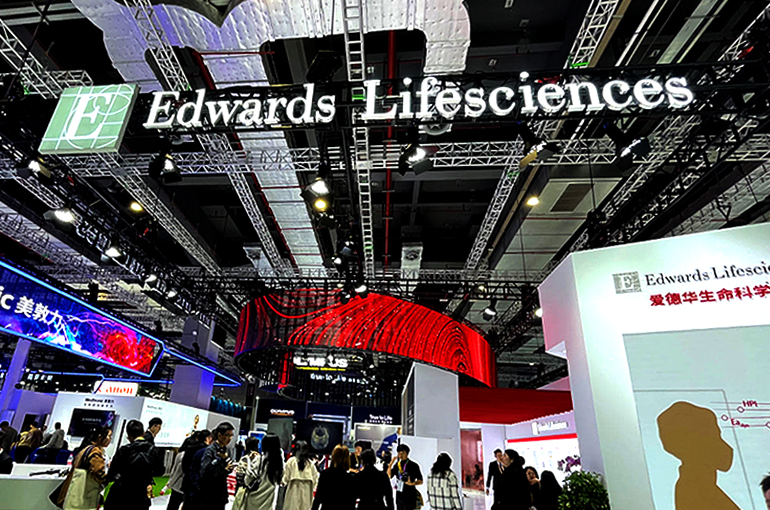 More Needs to Be Done to Bring TAVR to Heart Disease Patients in China, Edwards Lifesciences Exec Says
More Needs to Be Done to Bring TAVR to Heart Disease Patients in China, Edwards Lifesciences Exec Says(Yicai) Nov. 10 -- There is still much work to be done to bring transcatheter aortic valve replacement, which is a minimally invasive procedure to replace the aortic valve, to China, an executive at US artificial heart valve maker Edwards Lifesciences told Yicai at the ongoing China International Import Expo in Shanghai.
Around 3.8 percent of China’s population has cardiovascular disease, but less than 1 percent of these patients have undergone TAVR, compared with 20 percent in developed countries, said Leo Tam, director of TAVR at the California-based firm’s China arm. There are a lot of patients in China who go untreated.
Compared with traditional open-heart surgery, the TAVR method is safer, especially for high-risk patients and those unable to undergo open-heart surgery.
It is key to develop more centers with TAVR capabilities, and to educate more healthcare professionals not only on TAVR procedures but also on the prevalence and severity of valvular disease, Tam said.
Edwards Lifesciences is collaborating with world-class hospitals in China, such as Fuwai Hospital of the Chinese Academy of Medical Sciences, to set up teaching centers that help to train doctors across China in TAVR procedures.
Meanwhile, the Sapien 3, a balloon-expandable transcatheter heart valve that Edwards Lifesciences debuted at the CIIE in 2020, continues to go from strength to strength in the country. Clinical results on 1,000 Chinese patients with symptomatic heart disease align with worldwide clinical studies, Tam said.
The Sapien 3 has been used in 1,500 patients across 26 provinces in China, Tam said. The apparatus has been included in medical insurance coverage in central Henan province and Shanghai.
"We will continue to bring innovation to China, to serve more physicians and eventually cater to more patients," said Tam.
Editor: Kim Taylor